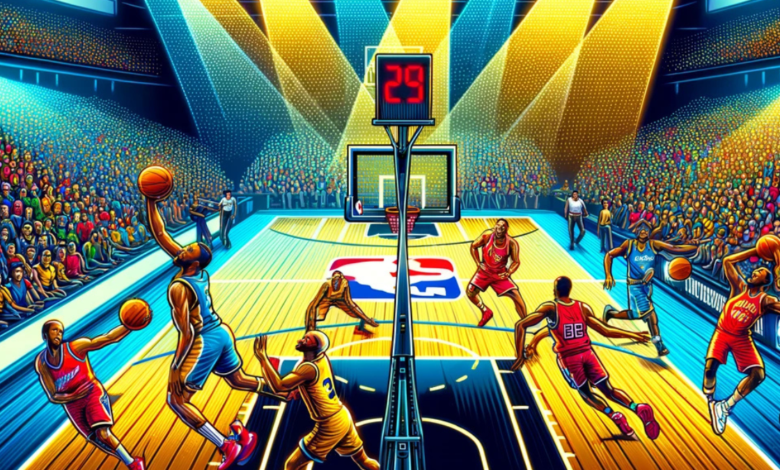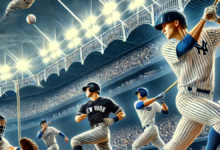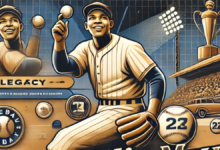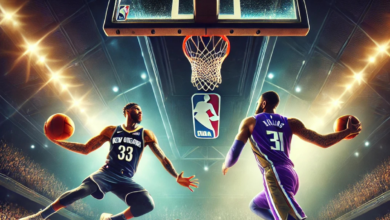NBA: A Comprehensive Dive into Basketball’s Premier League

Introduction: What is the NBA?
The National Basketball Association (NBA) is widely regarded as the premier professional basketball league in the world. Founded in 1946 as the Basketball Association of America (BAA), the league has grown exponentially over the decades, establishing itself as a global brand and a cultural phenomenon.
1. The History of the NBA: From Inception to Global Phenomenon
The NBA isn’t just about basketball—it’s a blend of athletic excellence, strategic gameplay, entertainment, and cultural impact. From its humble beginnings to its current global stature, the NBA has transcended sports to become a significant cultural force. Fans across the globe tune in not only for the games but for the drama, the rivalries, and the personalities that define the league.
But what makes the NBA so special? In this article, we’ll explore the history, evolution, cultural impact, and the elements that make the NBA a powerhouse in sports and entertainment.
The Birth of the NBA
The NBA’s story began in 1946 when the BAA was formed. At the time, basketball was primarily a college sport, and professional leagues struggled to gain traction. The BAA’s vision was to bring basketball into major arenas and make it a mainstream professional sport.
In 1949, the BAA merged with the rival National Basketball League (NBL), forming what we now know as the NBA. This merger was a turning point, consolidating talent and resources to create a more competitive and financially stable league.
Key Milestones in NBA History
Over the decades, the has seen numerous pivotal moments. The introduction of the shot clock in 1954 revolutionized the game, ensuring a faster pace and more dynamic play. The league’s desegregation in the 1950s marked a significant step toward inclusivity, paving the way for African American players to dominate the sport.
The 1980s were a golden era, with iconic rivalries like Magic Johnson vs. Larry Bird bringing unprecedented attention to the league. Michael Jordan’s dominance in the 1990s further elevated the NBA’s global profile, making it a household name worldwide.
The Globalization of the NBA
Today, the is truly a global league. With players from over 40 countries and a massive international fanbase, the league has effectively bridged cultural divides. Events like the Global Games and initiatives such as Basketball Without Borders highlight the league’s commitment to expanding its global footprint.
How the NBA is Organized
The consists of 30 teams divided into two conferences: the Eastern Conference and the Western Conference. Each conference is further divided into three divisions. This structure creates a balanced competitive environment, ensuring exciting matchups throughout the season.
The regular season spans 82 games, followed by the playoffs, where the top eight teams from each conference compete in a knockout format. The season culminates in the Finals, a best-of-seven series to determine the champion.
Iconic Franchises
Certain teams have become synonymous with the NBA’s success. The Los Angeles Lakers and the Boston Celtics, for example, have storied histories filled with championships and legendary players. Other franchises, like the Chicago Bulls and Golden State Warriors, have left indelible marks during their periods of dominance.
Expansion and Evolution
The has continually evolved, expanding its reach with new teams and markets. From the addition of the Toronto Raptors in 1995 to the Oklahoma City Thunder’s relocation in 2008, the league has adapted to changing dynamics and fanbases.
The Rise of Superstars
The has always been a league driven by its stars. From Wilt Chamberlain and Bill Russell in the early days to modern icons like LeBron James and Stephen Curry, players are at the heart of the league’s popularity. These athletes are not only basketball players but also cultural icons, influencing fashion, music, and social issues.
International Talent
The NBA’s globalization has brought an influx of international talent. Players like Dirk Nowitzki, Yao Ming, and Giannis Antetokounmpo have proven that basketball excellence knows no borders. Their success has inspired a new generation of players worldwide.
Development Pathways
The road to the often begins in high school or college, but alternative pathways like the G League and overseas leagues have become viable options. The Draft is a critical moment for young prospects, where dreams are realized, and the league’s future takes shape.
Revenue Streams
The generates billions annually through ticket sales, broadcasting rights, sponsorships, and merchandise. Deals with networks like ESPN and TNT, along with streaming platforms, ensure the league reaches a vast audience.
Marketing and Branding
The NBA’s marketing strategy is second to none. Campaigns like “Cares” and “This Is Why We Play” resonate with fans on a personal level, while social media engagement keeps the league relevant in the digital age.
The Role of Technology
Technology plays a significant role in the NBA’s success. Advanced analytics, virtual reality experiences, and mobile apps enhance fan engagement, while innovations like the Player Tracking System provide deeper insights into the game.
5. Cultural Impact: Beyond the Basketball Court
has been at the forefront of social activism, with players and teams using their platforms to address issues like racial inequality and social justice. Initiatives like the Foundation aim to create meaningful change in communities.
Entertainment and Pop Culture
From celebrity-packed courtside seats to halftime shows, the blends sports and entertainment seamlessly. The league’s influence extends to music, fashion, and even film, with players frequently starring in commercials and movies.
Iconic Moments
Certain moments in history have transcended the sport. Think of Michael Jordan’s “Flu Game,” Kobe Bryant’s 81-point performance, or the epic battles between the Lakers and Celtics. These events are etched in the memories of fans and contribute to the league’s legacy.
Current Challenges
The faces challenges like managing player load, addressing mental health, and adapting to a shifting media landscape. The COVID-19 pandemic also posed significant hurdles, forcing the league to innovate with solutions like the NBA Bubble.
The Role of Fans
Fan engagement is crucial to the NBA’s success. From in-person attendance to social media interactions, the league prioritizes its connection with fans. Initiatives like fan voting for the All-Star Game highlight this relationship.
The Road Ahead
The future of the NBA looks bright, with emerging stars like Luka Dončić and Zion Williamson poised to carry the torch. The league’s commitment to sustainability, inclusivity, and global expansion ensures it remains a leader in sports and entertainment.
Conclusion: Why the NBA Matters
The NBA is more than just a basketball league; it’s a cultural phenomenon that brings people together. Whether you’re a die-hard fan or a casual viewer, the NBA offers something for everyone. Its blend of athleticism, drama, and entertainment makes it a unique and enduring institution.
From its rich history to its promising future, the NBA continues to captivate audiences worldwide. As the league evolves, one thing remains constant: its ability to inspire, entertain, and unite people across the globe.





